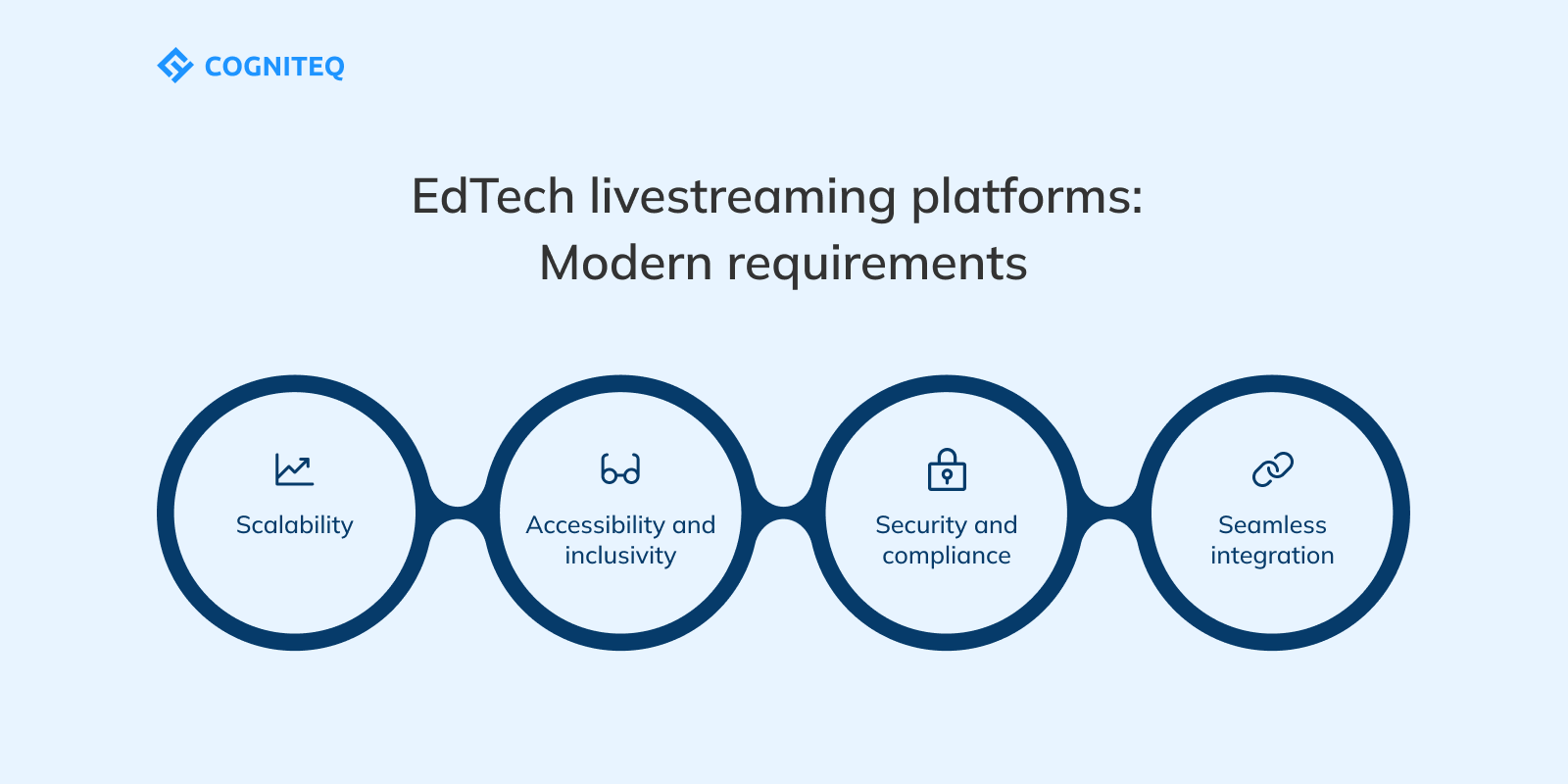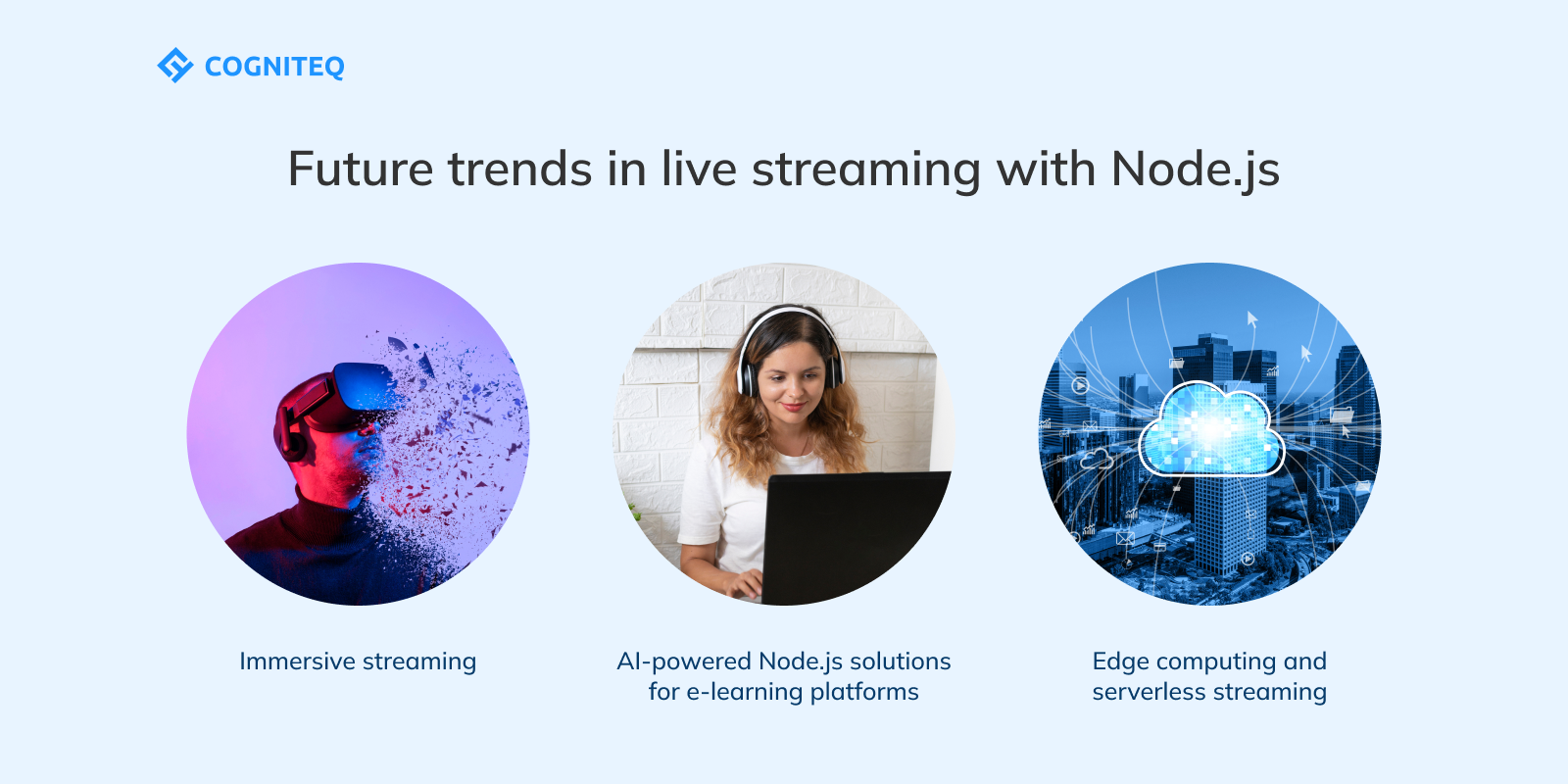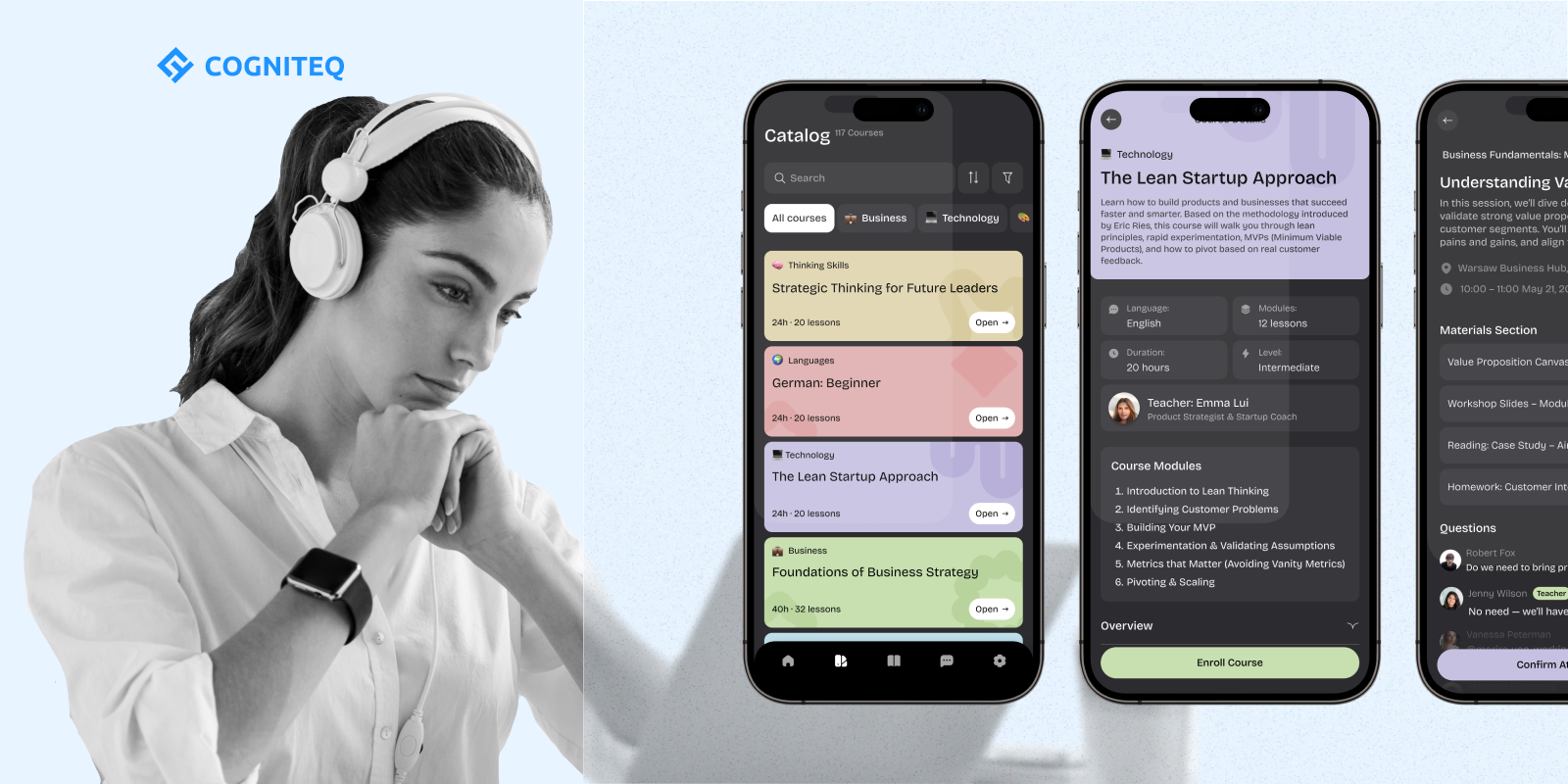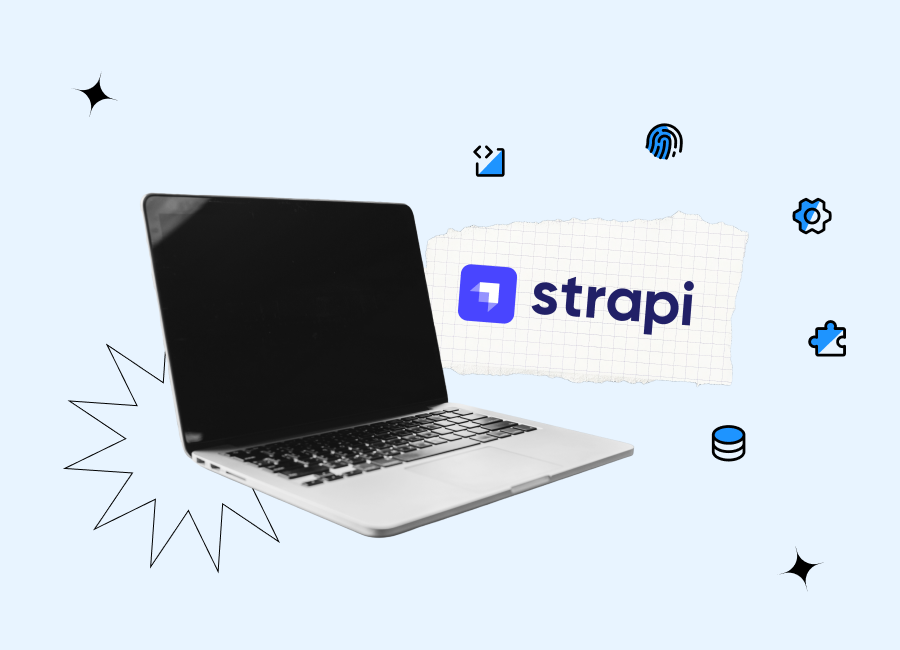As recent data shows, student attendance in live-streamed courses is 20% higher compared to traditional formats. Meanwhile, user retention is also 30% greater on live streaming platforms. Such figures demonstrate the viability of introducing this learning format across educational institutions and programs. As a live streaming software development company, we can observe a growing demand for such platforms. To address this demand and deliver solutions that meet user expectations, we need to rely on modern development approaches and a powerful tech stack. At the moment, Node.js has established itself as one of the core technologies for building solutions of this type.
In this article, we will talk about the possibilities of modern live streaming platforms in eLearning and explain why Node.js can be a very good option for such projects.
EdTech livestreaming platforms: Modern requirements
Market requirements, industry standards, and user expectations are quickly changing. To make a video streaming platform that will bring value to learners and instructors, you have to address the existing user needs. Here’s what is expected from such platforms now (and that’s exactly what professional developers can ensure with the help of Node.js).

- Scalability. A modern EdTech platform must be ready to deal with unpredictable spikes in traffic. This statement is relevant, even if it is initially designed as a platform for hosting virtual lectures for a few dozen students. To ensure smooth learning experiences, such solutions need to maintain video quality and low latency during peak usage. It can be achieved with cloud-native infrastructure and distributed servers.
- Accessibility and inclusivity. Modern education should be accessible to everyone, including people with disabilities. Online learning as a concept significantly contributes to the promotion of this goal. Live streaming platforms should support multiple devices, multilingual streams, speech-to-text and text-to-speech tools, as well as real-time translation.
- Security and compliance. The online learning process includes the sharing of sensitive student information. Given this, robust security is essential. Security measures like end-to-end encryption, user authentication, and compliance with education data standards not only ensure the required protection but also build trust.
- Seamless integration. Modern livestreaming platforms must be smoothly connected with the larger EdTech ecosystem. APIs and integrations with learning management systems, CRMs, and assessment tools streamline workflows and ensure a unified digital experience.
Benefits of building video streaming using Node.js
Our team has been working in the software development market for more than 15 years. Over this time, we have observed how different tech trends replaced each other in various domains, including video streaming. Now, we see that Node.js is gaining popularity as a key technology for live streaming platforms in education and other industries.
And there are weighty arguments that prove that Node.js development is the right choice for teams that want to make a video streaming platform.
- Efficiency for real-time streaming. Node.js utilizes an event-driven, non-blocking I/O model. It is well-suited for handling continuous data flows like live video/audio streams. This ensures low latency and smooth delivery even for large audiences.
- Scalability for global audiences. With Node.js, it is possible to scale horizontally across servers. Load balancing can be used to deliver online content to millions of concurrent users in real time.
- Faster development cycles. In Node.js projects, developers can use JavaScript on both frontend and backend. This approach reduces context switching and helps speed up development. Apart from this, the rich ecosystem of npm packages ensures faster and easier integration of features like video encoding, chat, or payments.
- Support for modern streaming protocols. Node.js integrates well with protocols like WebRTC and RTMP. These protocols make it easier to enable live broadcasting, video-on-demand (VOD), and real-time interactivity like quizzes, polls, etc.
- Security and reliability. Node.js supports the SSL/TLS protocols, encryption libraries, and JWT authentication (via third-party packages). These measures help protect both the content and user data.
- Cross-platform compatibility. Node.js is lightweight and portable. Thanks to this, streaming apps can be developed to run across web, mobile, and desktop environments with minimal code duplication.
- Active community. The Node.js community offers a wealth of open-source tools for video streaming, including but not limited to media servers, real-time communication APIs, and analytics packages.
Live streaming with Node.js: Features for your eLearning Platform
When you have plans to develop a streaming platform with Node.js, you should clearly understand what features and tools you can build for your solution. In the list below, you can find the most highly demanded functionality for EdTech platforms of this type.
Core live streaming capabilities
With WebRTC and Node.js signaling servers, developers can ensure near-real-time video and audio delivery. This is essential for interactive classes as delays can easily break the flow of discussion.
Apart from the possibility to join different events online, learners should be provided with convenient tools to record and replay all live sessions to revise necessary information. Moreover, this feature can also be valuable for teachers who can reuse their online lectures later.
Interactive tools
High engagement is an important condition for successful learning. With modern technologies, you can build powerful engagement tools that will boost interest in the learning process among users of different ages.
For instance, with a real-life chat, learners can communicate with peers and send live reactions during sessions to simulate the effect of presence.
Live quizzes and polls that can be launched mid-session help teachers test knowledge or gather opinions and keep learners engaged.
Apart from this, gamification is one of the most efficient methods to boost motivation.
According to research, the use of gamified approaches can ensure a 51% increase in motivation among learners. At the same time, 85% of participants in gamified programs demonstrate better knowledge retention. That’s why it can be a good idea to enrich the learning process with leaderboard rankings, points, and badges that students will get for attendance or quiz performance.
Collaboration tools
If you want to make a video streaming platform for online education, it’s also highly recommended to include features that will allow learners and professors to interact with each other.
For example, such platforms can be enriched with:
- a digital whiteboard for sketching diagrams and writing formulas in real time;
- screen sharing tools;
- a shared notepad available to all students;
- file sharing.
Content and course management
Your platform can be enriched with a content library. It usually represents a collection of recorded lectures, presentations, and reference materials so that learners can revisit content at any time.
Apart from it, you can create a separate course builder for teachers and instructors. It will greatly facilitate the process of preparing lectures and assignments.
Analytics
It’s also worth thinking about analytics available to users, when you develop a streaming platform with Node.js. Modern analytics tools help teachers better understand the needs of students and adjust the learning and training processes to their skills, interests, and preferences.
What metrics can be tracked? Here, everything depends on the peculiarities and goals of your platform. As a rule, educational organizations prefer to monitor student attendance, their participation in different activities (polls, quizzes, discussions, etc.), their learning outcomes, and their level of satisfaction.
In addition to such monitoring tools, you can also introduce predictive analytics. It will not only track real-time parameters but also compare them against historical data and common trends to identify underperforming students or students at risk of dropping out.
Looking for a team that will develop a live streaming platform for you?
At Cogniteq, we design and build scalable, feature-rich live streaming solutions tailored to your business needs. Just share your ideas with us!
Future trends in live streaming with Node.js
Tech advancements are shaping the future of many aspects of education. And live streaming is not an exception here. As more and more teams choose Node.js as a core technology to make a video streaming platform, it will be helpful to have a look at the key trends in this field.

Trend 1. AI-powered Node.js solutions for e-learning platforms
The use of AI opens a wide range of new opportunities for delivering advanced learning experiences.
For example, it is expected that in the future, Node.js will be increasingly used to orchestrate speech-to-text models to provide real-time captions and translations into multiple languages.
Apart from this, AI can be applied to content moderation. Though it still has some limitations, this technology can detect hate speech or spammy chat messages in real time.
Trend 2. Immersive streaming
If you want to build a live streaming platform with Node.js, you can also enrich this solution with VR/AR features.
Node.js helps synchronize video with 3D models in AR-powered online educational events.
Moreover, Node.js can be used to connect live video with 3D worlds where users can chat, buy extra items, or interact with avatars.
Such functionality makes the educational process more engaging and efficient.
Trend 3. Edge computing and serverless streaming
Traditional centralized servers cause higher latency in EdTech platforms when learners are geographically distant. This can result in delays of 5–30 seconds.
Edge computing allows developers to move video processing, caching, and delivery closer to the end-users.
With this approach to building live streaming solutions, global universities can broadcast their lectures to hundreds of thousands of concurrent viewers and dynamically scale without downtime.
Video streaming with Node.js: Our experience
With all its benefits, Node.js is a popular choice among teams that plan to make a video streaming platform. Our team successfully works with software development projects from different domains. And eLearning is one of those in which we have the strongest expertise.
One of our clients contacted us with a request to build a platform for online courses with video streaming functionality.
The key idea behind this project was to provide organizations and educators with a convenient way to set up virtual classrooms for corporate learning, workshops, online lessons, etc. Apart from ensuring the possibility of uploading materials for online education, the platform had to allow users to organize live video broadcasts.
Our team was hired to develop a full-scale web application, as well as iOS and Android apps. We needed to create all these products from scratch.

Due to its technical complexity, the project required rigorous planning. One of the core tasks was to develop the app server. All data and services were hosted exclusively on AWS. We needed to create a unified ecosystem, which was quite challenging. It was required to ensure the stable functioning of more than 30 different cloud services.
The foundation of any successfully delivered solution is the right choice of the tech stack. One of the technologies that we relied on in this project was Node.js. It fully met the project requirements and allowed us to build the desired functionality within reasonable timeframes.
Apart from the live streaming functionality, the platform is also equipped with tools for course assessment, real-time testing, as well as analytics and progress tracking. After its launch, the platform has captured the attention of both international corporations and universities.
If you want to learn more about how we managed to build a live streaming platform with Node.js, read our case study.
Conclusion
The demand for interactive live streaming EdTech platforms is gradually growing amid the total digitalization of learning experiences. This results in an increasing interest in Node.js as a core technology for developing such solutions.
Its event-driven architecture and ability to handle a huge number of concurrent connections ensure stable performance and flexibility of live streaming. That’s exactly what is required to power real-time learning processes at scale.
With Node.js, our developers can create scalable and reliable platforms that will be engaging for users from different corners of the world.
Do you already have an idea for a future product? Or are you just considering the possibility to build a live streaming platform with Node.js? Contact us! With solid expertise in this domain, our specialists will be able to support you at any step of your project realization.
FAQ
What are the benefits of using Node.js for EdTech live streaming platforms?
Node.js is a good choice for building EdTech live streaming platforms. Thanks to its non-blocking, event-driven architecture, it can efficiently handle multiple connections. This ensures smooth performance of platforms even with thousands of concurrent online learners.
How can Node.js handle real-time video integration?
To manage real-time communication, Node.js relies on WebSockets and libraries like Socket.io. As a result, it can seamlessly deal with instant data exchange between servers and clients, which is essential for live video and chat features.
What technologies are used with Node.js for online learning platform development?
The tech stack of such Node.js projects often also includes WebRTC for video streaming, React or Angular for frontend development, and MongoDB as a database. When you are building a live classroom, you can integrate your software with Redis for session management and cloud services like AWS or Azure.
Is Node.js suitable for startups in education from a financial perspective?
Yes, the use of Node.js to make a video streaming platform is a feasible option for startups. It uses fewer server resources for handling high traffic than many other technologies. It has a large ecosystem of open-source libraries. They can help significantly reduce development time and costs. Moreover, startups can easily scale their Node.js EdTech platforms without heavy infrastructure investment.










































